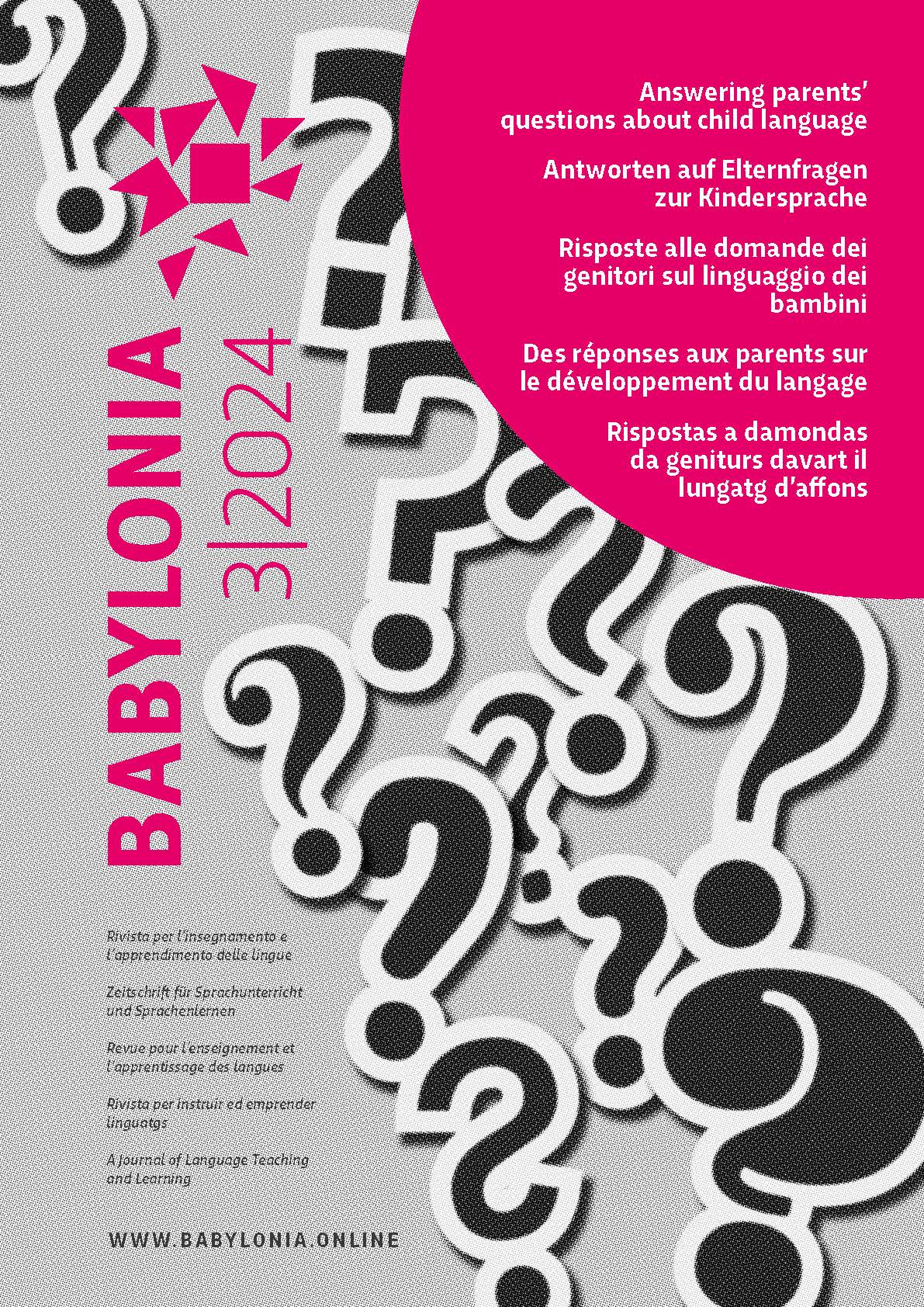Are children exposed to multiple languages at home more likely to develop dyslexia?
DOI:
https://doi.org/10.55393/babylonia.v3i.430Keywords:
apprentissage naturel - prédicteurs - langage académiqueAbstract
Between September and December 2023, Babylonia collected questions from parents about their children's language development. This article aims to address the following question:
Are children exposed to multiple languages at home more likely to develop dyslexia?
[Summary generated by GPT-4o - we refer the reader to the French article in PDF format for a complete answer]
This article examines whether children exposed to multiple languages at home are at a higher risk of developing dyslexia.
Several factors influence bilingual language acquisition in children, such as the age of exposure, the level of exposure to both languages, and the socio-economic context. These individual differences are crucial to consider.
In terms of learning to read, the characteristics of the writing systems involved play an important role. For alphabetic languages, phonological awareness and rapid naming skills are critical. For non-alphabetic languages like Chinese, other skills such as visuo-attentional and visuo-motor abilities are involved.
The research literature indicates that when language exposure and educational contexts are appropriate, reading development is comparable in monolingual and simultaneous bilingual children. For sequential bilinguals, the transfer of phonological skills from one language to another supports learning.
However, certain risk factors can accumulate for some bilingual children, such as imbalanced sequential language learning, languages with very different writing systems, or a low socio-economic status. In such cases, an in-depth assessment by a speech therapist trained in bilingualism is necessary.
In conclusion, bilingualism itself is not a risk factor for dyslexia. Rather, it is the combination of individual, linguistic, and environmental factors that determines the challenges bilingual children may face in learning to read.
Downloads
Published
How to Cite
Issue
Section
License
Copyright (c) 2024 Agnes Witko

This work is licensed under a Creative Commons Attribution 4.0 International License.






